Most furniture has some kind of decorative trim around the edges. While this trim can be beautiful, it can also be a pain to remove when you want to refinish or paint your furniture. In this blog post, we will show you how to remove decorative trim from furniture without damaging the piece. Stay tuned for our tips and tricks!
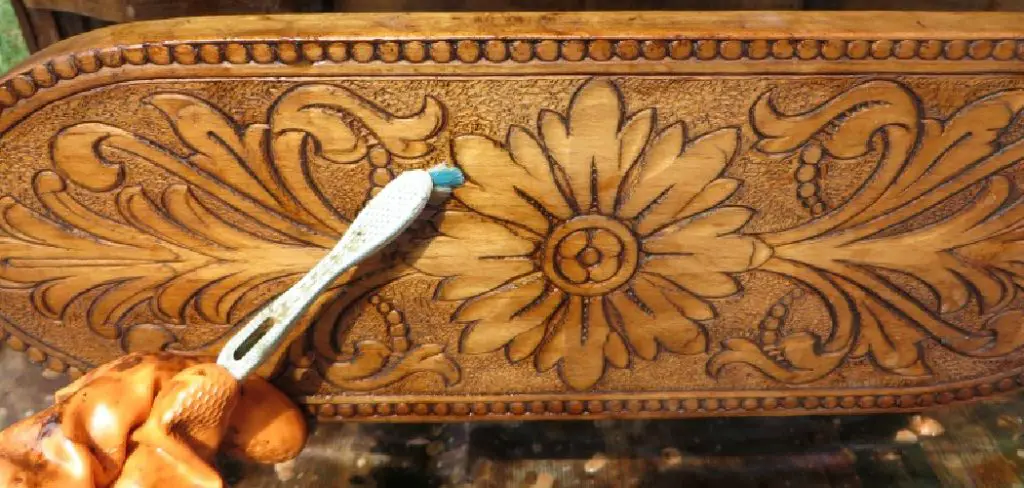
If you’re refinishing an old piece of furniture, the last thing you want to do is spend hours removing decorative trim. Fortunately, there are a few tricks that make the process much easier. After going through this post, you will know many ways to remove decorative trim from furniture without damaging the surface. So if you’re ready to start stripping some paint, keep reading!
Why May You Need to Remove Decorative Trim From Furniture?
There are many reasons why you may need to remove decorative trim from the furniture. Such as:
1. Update the Look of the Piece
Removing ornate trim can give the furniture a more modern and updated look. It will also make it easier to repaint or stain the piece. So if you want to give your furniture a fresh new makeover, removing the trim is a good place to start.
2. Damaged Trim
If the decorative trim on your furniture has become cracked or damaged, removing it and replacing it with new trim can make the piece look new again. But you have to make sure to find the trim that matches the style and design of the furniture.
3. Personal Preference
Sometimes, it’s just a matter of personal preference. If you don’t like the look of the decorative trim on your furniture, removing it can give the piece a simpler and more minimalist look. Also, if the trim is getting in the way of the furniture’s functionality, it may be better to remove it.
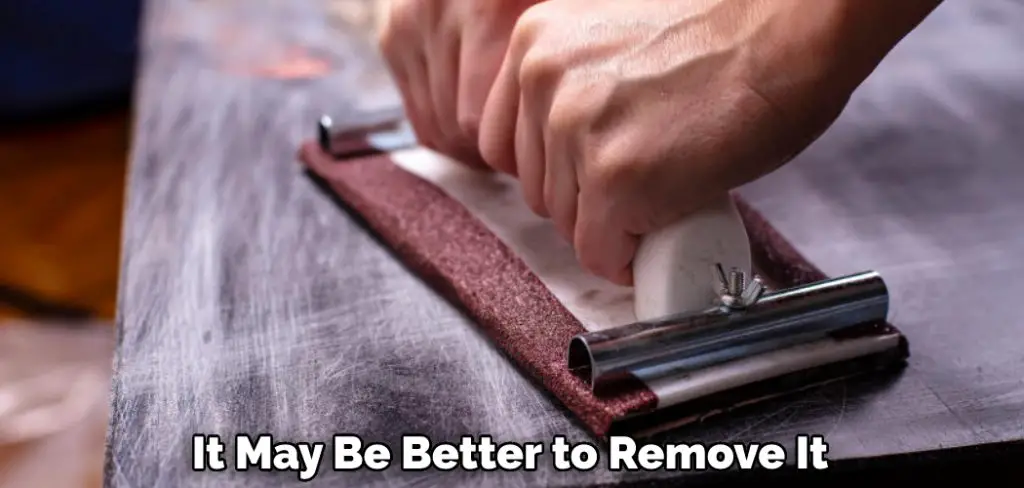
Now that we’ve gone over some reasons why you may need to remove decorative trim from furniture let’s move on to the steps for how to do so.
Things You May Need to Remove Decorative Trim From Furniture
- Screwdriver or pry bar
- Hammer
- Sandpaper
- Wood putty
8 Ways About How to Remove Decorative Trim From Furniture
1. Use a Screwdriver
If the decorative trim is attached with screws, use a screwdriver to remove them carefully. Make sure to keep track of where each screw goes so that you can easily reattach the trim later if desired. But make sure to use the correct screwdriver for the type of screws on your furniture.
2. Use a Pry Bar
If the decorative trim is not attached with screws, you may need to use a pry bar to remove it carefully. Start at one end and gently pry off the trim, being careful not to damage the wood underneath.
3. Use Heat
If the decorative trim is still not budging, try using a heat gun or blow dryer on a low setting to loosen the adhesive holding it in place. Then use a pry bar to remove it. But keep in mind that using heat can potentially damage the wood, so use caution.
4. Use a Hammer and Putty Knife
If the decorative trim is nailed in place, use a hammer to carefully remove the nails. Then use a putty knife to pry off the trim without causing damage to the wood underneath. So make sure to use caution and go slowly.
5. Use Chemical Strippers
Chemical strippers can also be used to remove decorative trim from furniture, but make sure to use them in a well-ventilated area and follow all safety precautions on the label. Apply the stripper to the decorative trim and let it sit for the recommended amount of time before using a putty knife to remove it.
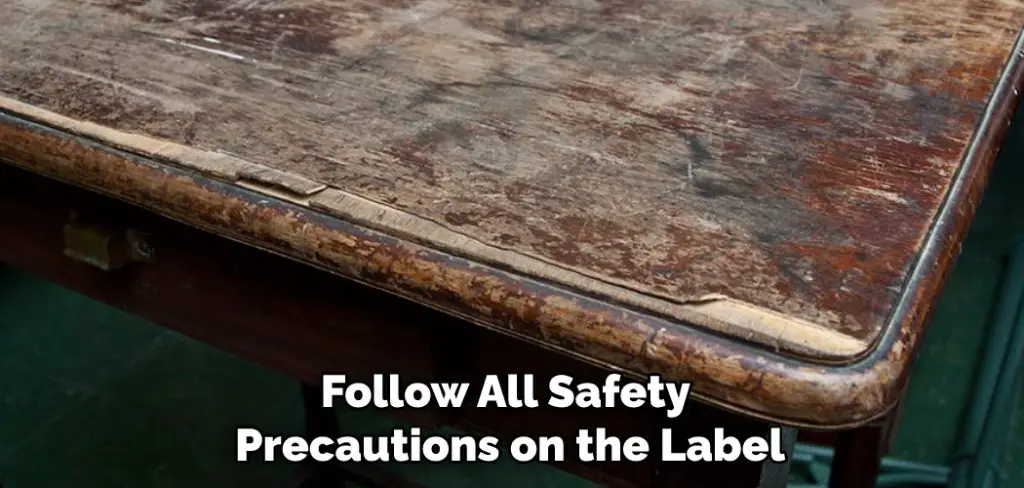
6. Use Sandpaper
If there is any remaining adhesive or residue left on the furniture after removing the decorative trim, use sandpaper to buff it off gently. And make sure to sand in the direction of the wood grain for best results. It will help prepare the surface for a new coat of paint or stain.
7. Use Wood Putty
If there are any nail holes or cracks in the wood left behind after removing the decorative trim, use wood putty to fill them in and make the surface smooth again. Then sand it down once dry for a seamless finish.
8. Use Pliers
If the decorative trim has nails that are harder to remove with a hammer, try using pliers to pull them out. Just be careful not to damage the wood underneath. Also, make sure to keep track of where each nail goes so they can be reattached if necessary.
Some Additional Tips and Tricks to Remove Decorative Trim From Furniture
1. Take Your Time
Removing decorative trim can be a delicate process, and rushing it could result in damaging the furniture. Take your time and be careful when removing the trim. Also, make sure to examine the piece for any hidden screws or nails that may be holding the trim in place.
2. Use an Exacto Knife
If you are struggling to remove the decorative trim with just your hands, try using an Exacto knife to gently pry off the trim piece. Be careful not to damage the furniture, and use a steady hand when using the knife.
3. Consider Replacing
If the decorative trim is too difficult or time-consuming to remove, consider replacing it with new trim that matches the style of your furniture. This can add a fresh and updated look to the piece. But make sure to measure and purchase the correct size of trim before attempting to replace it.
4. Hire a Professional
If you are unsure or uncomfortable with removing decorative trim yourself, consider hiring a professional to do it for you. They will have the necessary tools and experience to safely remove the trim without damaging your furniture.
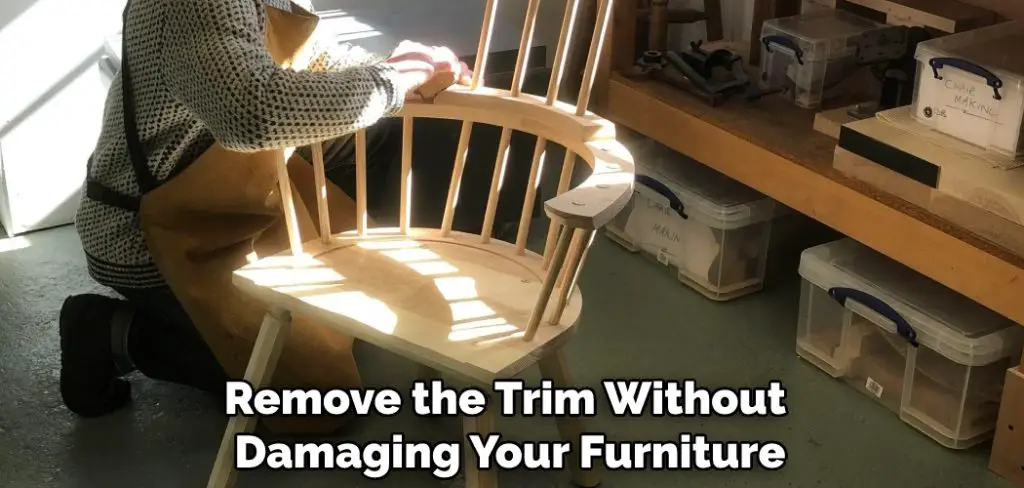
Overall, remember to be patient and careful when removing decorative trim from furniture to ensure the best outcome.
Frequently Asked Questions
How Do I Know if the Trim on My Furniture is Purely Decorative or if It Serves a Functional Purpose?
First, try to see if the trim can be easily removed without damaging or compromising the structure of the furniture. If it seems like removing the trim would weaken the piece, it is likely serving a functional purpose and should not be removed. Additionally, consider consulting with an expert in furniture design or restoration before attempting to remove any trim.
What Can I Do with the Removed Decorative Trim?
If the trim is in good condition, it can be saved for future use or potentially sold. Otherwise, it can be discarded or recycled as appropriate. Make sure to dispose of small pieces or sharp edges safely.
Are There Any Special Tools or Techniques Needed for Removing Decorative Trim from Furniture?
Depending on the specific type of trim, a putty knife or heat gun may be helpful in removing it. It is important to use caution and go slowly to avoid damaging the furniture. If in doubt, consult with a professional before attempting to remove decorative trim.
How Much Will Cost to Have a Professional Remove Decorative Trim from My Furniture?
The cost will vary depending on the individual furniture piece and type of trim. It is recommended to get quotes from multiple professionals before making a decision. Keep in mind that removing decorative trim may also decrease the value of the furniture piece.
Can I Replace or Add Decorative Trim to My Furniture?
Adding or replacing decorative trim is possible, but it may be best left to a professional. Make sure to choose trim that complements the overall design and style of the furniture piece. It is also important to properly attach the trim so that it does not come loose or cause damage to the furniture.
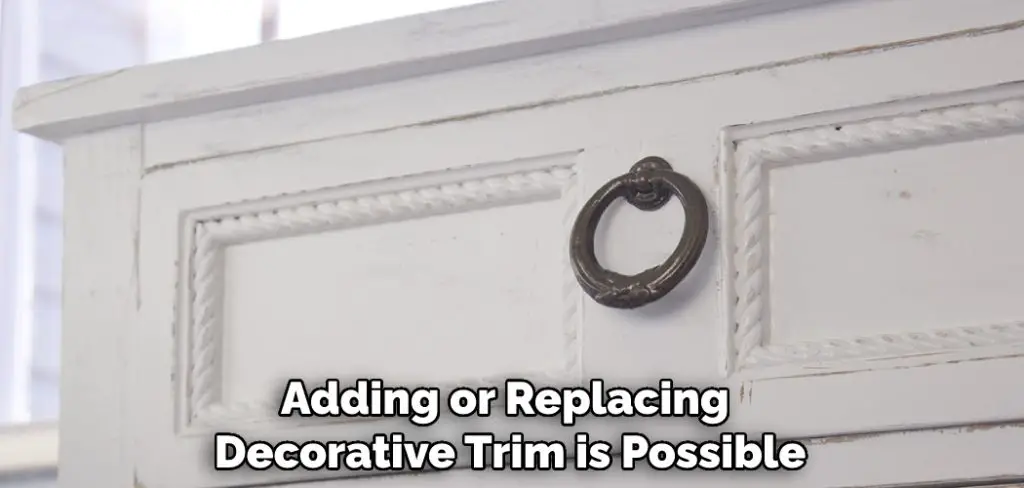
Overall, carefully consider the potential consequences before removing decorative trim from the furniture. Consult with experts and proceed with caution to ensure the best outcome for your piece.
Conclusion
You now know how to remove decorative trim from furniture without damaging the piece. With a few simple tools and some patience, you can give any old piece of furniture a new lease on life. So get out there and start stripping!
With a few household tools, patience, and extra care, you can remove decorative trim from furniture without ruining the piece. With these steps, you can successfully liberate your furniture from outdated or tacky details to give it newer life in your home. By following these steps, you’ll have no problem removing decorative trim from any piece of furniture in your home.

